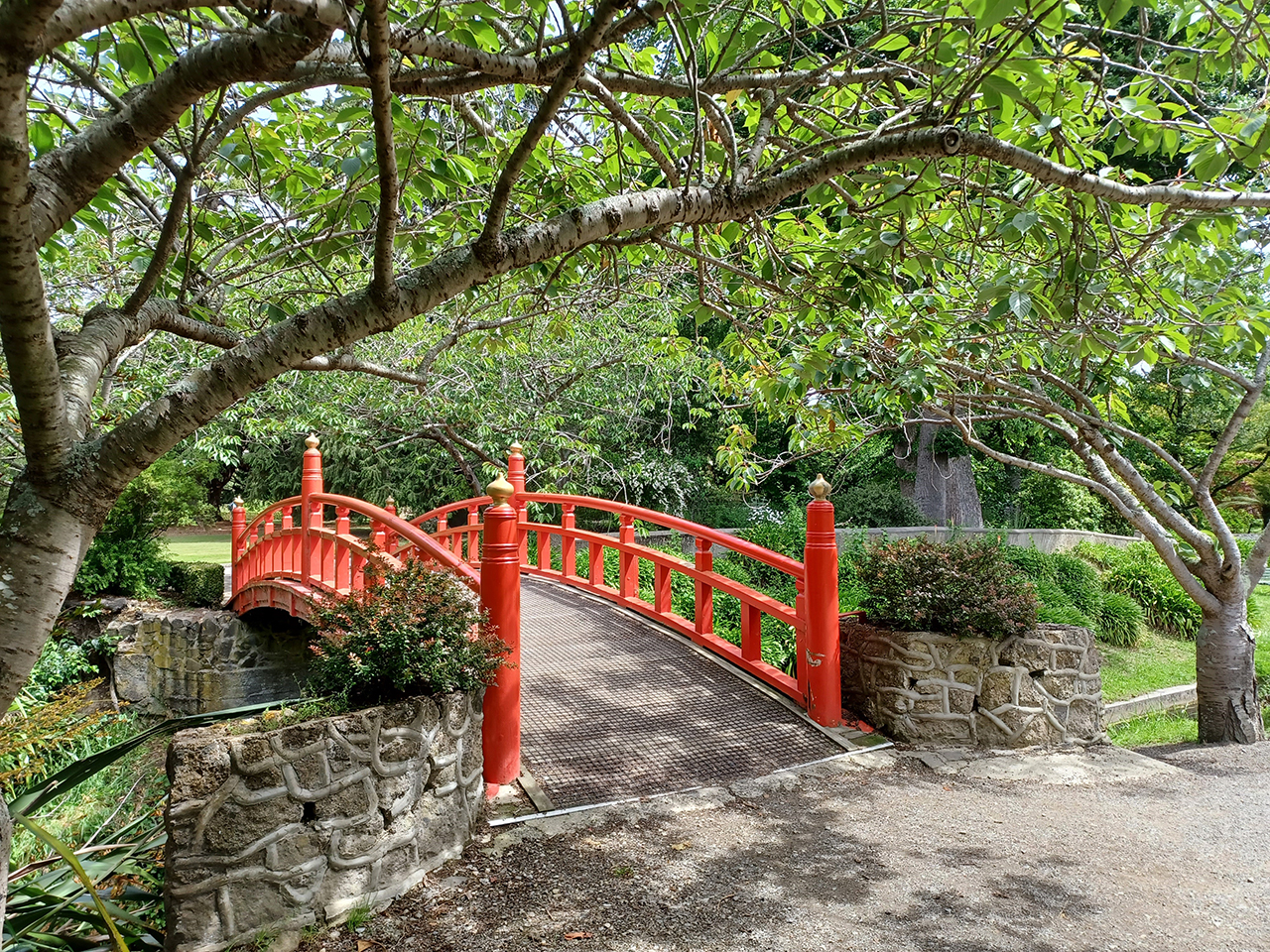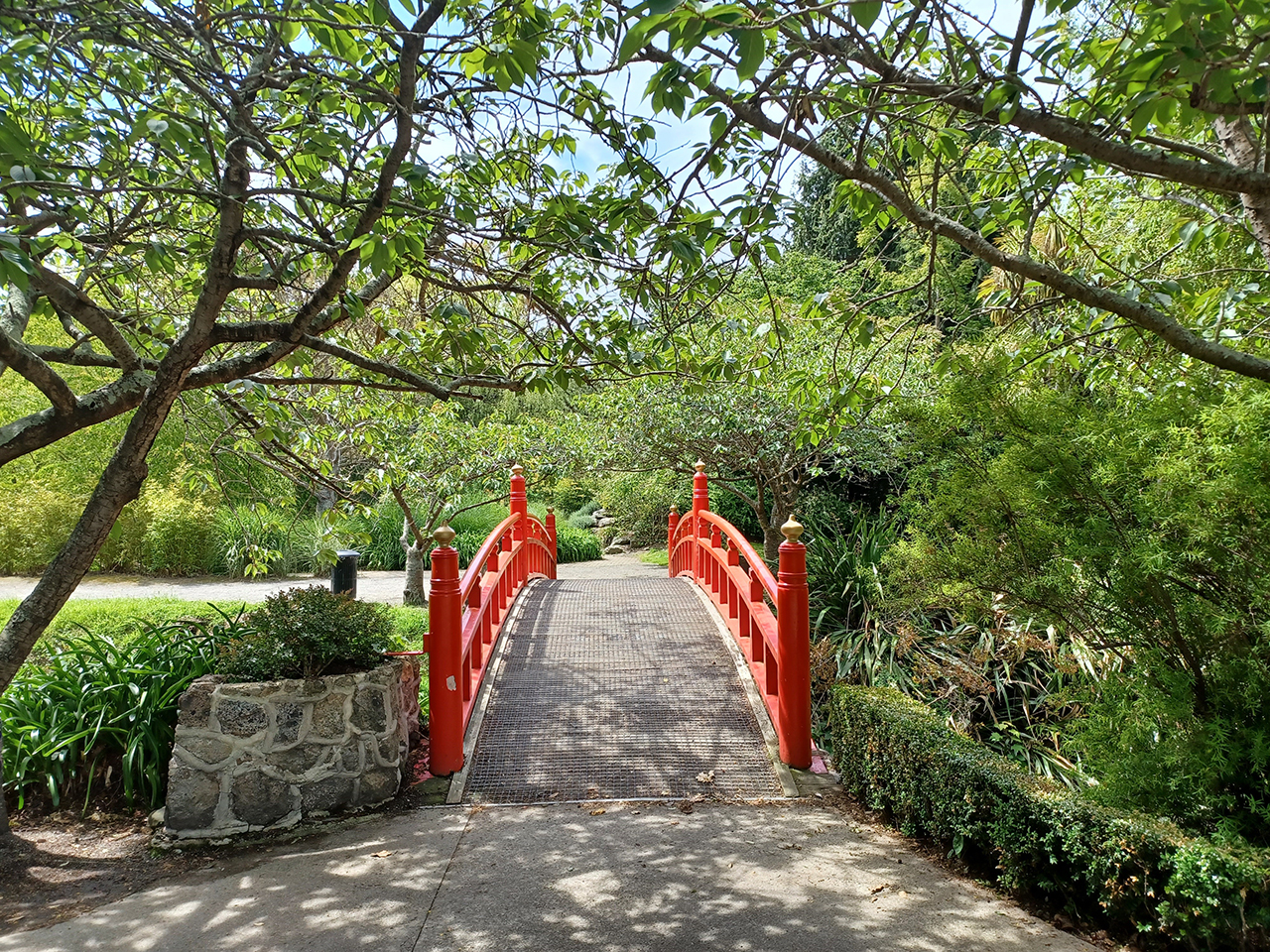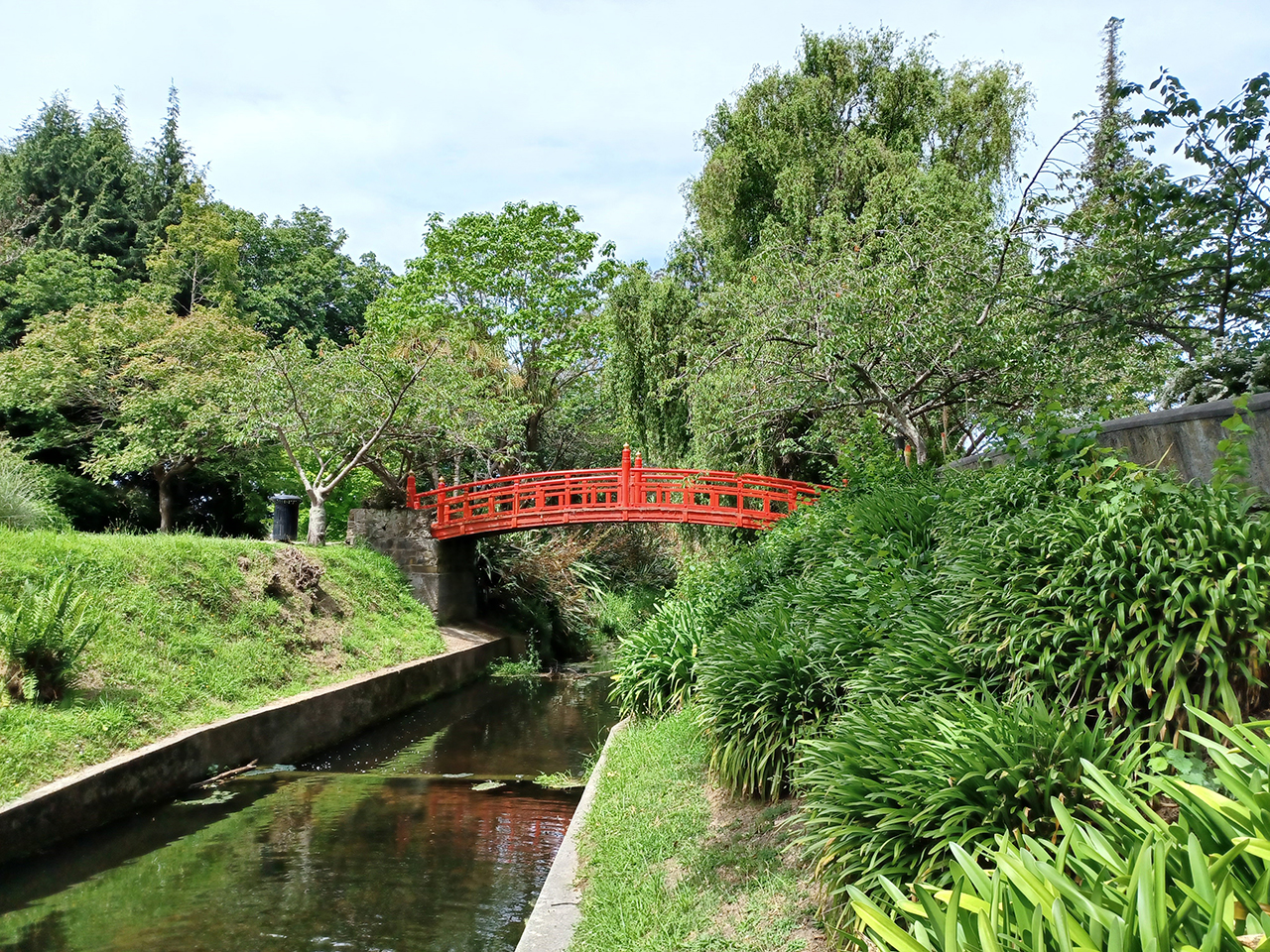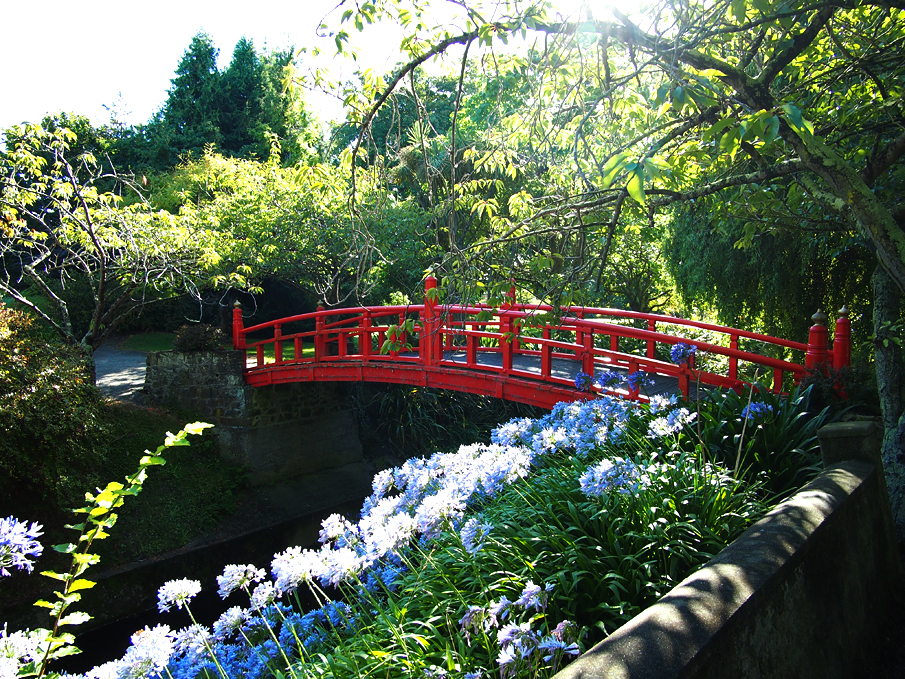This arched timber bridge, designed by Oamaru architect Ivan Steenson in 1929, and inspired by the Shinkyo Bridge at the Nikko Temple in Tochigi prefecture of Japan, has architectural significance. Crossing Oamaru Creek, the Japanese Bridge provides a striking link between the two parts of the Oamaru Public Gardens. In 1876 the Oamaru Public Gardens opened on a 34 acre reserve set aside in the 1858 town survey. With their mix of native and exotic plantings, formal lawns and garden beds set alongside the meandering Oamaru Creek, the gardens were a popular gathering and walking place. By the latter half of the nineteenth century the knowledge of Japanese architecture and design began to influence Western garden design – ‘romantic articulations of tranquil harmony’, a poetic vision of Japan appealing to Western desire to visit a nostalgic past. Oamaru would also turn to Japan for inspiration in the Oamaru Public Gardens. The late 1920s saw new structures built in the gardens, including the Greenhouse and children’s playground. Bridges were also renewed or new ones built – including this bridge linking the north and south sides of the gardens, separated by Oamaru Creek. Notes record that the bridge was designed by Oamaru architect Ivan Steenson, and constructed by unemployed boys during the Depression, supervised by H.J. Jenkins. A 1947 article records that ‘when the erecting a new bridge in the Gardens came under review, it was decided to copy the red lacquer bridge of Nikko.’ The bridge the article refers to is the Shinkyo Bridge that acts a gateway to the shrines and temples of Nikko, at Nikko City in Tochigi prefecture and is part of the UNESCO World Heritage Site. Red Bridges or Guzei are a component of traditional Japanese Gardens, symbolising the route the blessed take to salvation. The bridge is an appealing structure in the gardens, and an attraction in spring time when the nearby (and appropriately planted) cherry blossoms were out. In 1947, the Otago Daily Times recorded that ‘[r]esidents of Oamaru can at present fully appreciate the artistry of the Japanese bridge in the public gardens, and at the same time gain some impression of the beauties of Japan in cherry blossom time.’ The bridge has been repaired over its life and was apparently rebuilt in tanalised timber in the 1980s. The bridge is an arched timber bridge, with timber hand rails and gilt decoration and is painted red in the style of a Japanese bridge. In 2015, the Japanese Red Bridge remains an attraction in the Oamaru Public Gardens.




Location
List Entry Information
Overview
Detailed List Entry
Status
Listed
List Entry Status
Historic Place Category 2
Access
Able to Visit
List Number
7152
Date Entered
2nd February 1994
Date of Effect
2nd February 1994
City/District Council
Waitaki District
Region
Otago Region
Extent of List Entry
Extent includes part of the land described as Lot 2 DP 317966 (RT 70398), Otago Land District, and the structure known as the Japanese Red Bridge thereon, as shown in the extent map tabled at the Rārangi Kōrero Committee meeting on 5 April 2016.
Legal description
Lot 2 DP 317966 (RT 70398), Otago Land District
Stay up to date with Heritage this month
